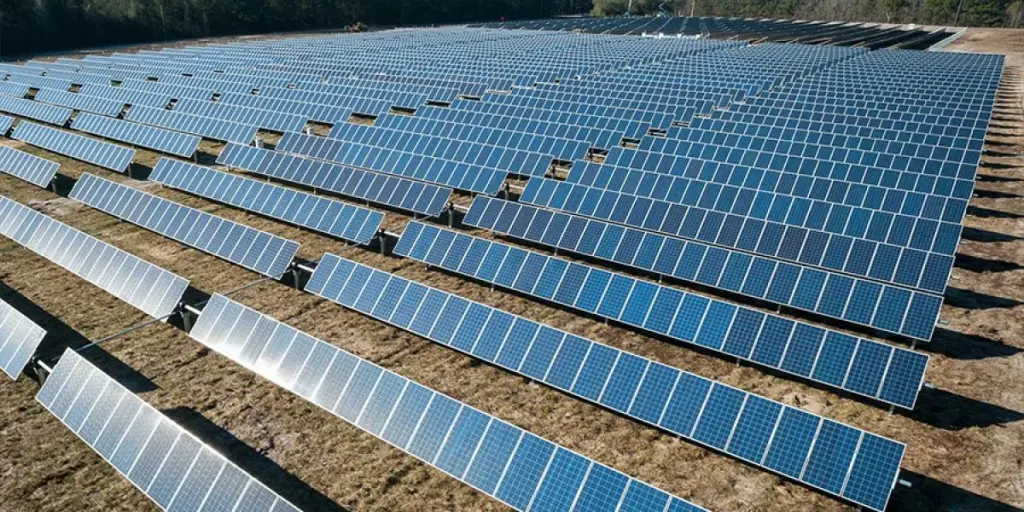Researchers in Spain have calculated the potential self-sufficiency of rooftop solar in eight districts of Madrid, Spain. They have found that single-family homes can achieve self-sufficiency rates of more than 70%, while urban areas with high-rise buildings reach 30%.

Image: Florian Wehde/Unsplash
From pv magazine Spain
A group of researchers from the Polytechnic University of Madrid and the Centre for Energy, Environmental and Technological Research (CIEMAT) have analyzed the potential self-sufficiency of photovoltaics on residential buildings in eight neighborhoods of Madrid.
The neighborhoods were chosen to determine the impact urban and building characteristics have on meeting electricity consumption through rooftop photovoltaic systems. The results of the research are included in the paper Photovoltaic self-sufficiency potential at a district scale in Madrid. A scalable methodology, published in Energy and Buildings.
To calculate the self-sufficiency potential, defined as the ratio of photovoltaic electricity generated to total electricity consumed, annual electricity generation and consumption were assessed for each residential building. The assessment of electricity generation was performed using solar cadastres generated through the Solar Energy on Building Envelopes model in QGIS (Quantum Geographic Information System), LiDAR (light detection and location) data and TMY (typical meteorological year) data for each neighborhood.
In addition, assumptions were made about the main characteristics of the solar systems to ensure representativeness of the photovoltaic sector. Electricity consumption was estimated by analyzing the consumption values defined by the Institute for the Diversification and Saving of Energy (IDAE), alongside those featured in a Eurostat report titled Consumptions of the Residential Sector in Spain, and some of the formulas used in the research article How to Achieve Positive Energy Districts for Sustainable Cities: A Proposed Calculation Methodology, published in 2021 in Sustainability.
The consumption figures were obtained by calculating the electricity consumption for lighting and household appliances in a typical 100 m2 dwelling, excluding consumption for heating, cooling and hot water. The specific lighting needs of a typical dwelling are indicated at 5 kWh/m2, while the average equipment in a dwelling is detailed as a refrigerator, two televisions, a washing machine, a dishwasher and a computer.
Together, these appliances add up to a consumption of 2,137 kWh per 100 m2 of a dwelling, equivalent to 21.40 kWh/m2. The sum of these two figures to the average consumption per square meter gives a value of 26.40 kWh/m2. However, the study does not consider the electricity consumption for cooling, heating or mobility. The increasing use of heat pumps and electric air conditioning, together with the electrification of transport, will result in higher electricity consumption in households, which will reduce the potential for self-sufficiency, the researchers said.
The results of the analysis indicate that in areas composed of single-family homes or low-rise buildings, self-sufficiency potential exceeds 70%. In contrast, urban areas with high-rise buildings have a self-sufficiency value of approximately 30%. This lower value can be attributed to the considerable height of the buildings, which translates into greater energy consumption within the homes and an area available for photovoltaic installation that is insufficient to cover the energy needs of all inhabitants.
In historic centers, a greater dispersion of the self-sufficiency potential is observed, with values ranging from 10% to 90%. This variability is attributed to the lower uniformity of the urban fabric, which requires more detailed analysis at the building scale. “In urban centers, which are often protected by protective legislation due to their historical significance, BIPV systems are a crucial tool to harmonize distributed PV generation with the conservation of the architectural and historical essence of the built environment,” the authors added.
They also stressed that the analyses have been carried out by comparing annual generation and consumption. Although this approach is valuable for estimating the overall potential for PV power generation, it cannot reproduce the real-time behavior of grid-connected PV systems, where the balance between generation and consumption is instantaneous. Indeed, typical energy consumption profiles of residential buildings result in self-consumption rates of 20-40% in PV systems without storage.
To carry out a more comprehensive analysis, it would be necessary to have access to the daily generation and consumption curves of each building with an hourly resolution, or even better, a resolution of a few seconds, which would optimize the sizing of installations to boost self-consumption, the research group concluded.
This content is protected by copyright and may not be reused. If you want to cooperate with us and would like to reuse some of our content, please contact: editors@pv-magazine.com.
Source from pv magazine
Disclaimer: The information set forth above is provided by pv-magazine.com independently of Alibaba.com. Alibaba.com makes no representation and warranties as to the quality and reliability of the seller and products. Alibaba.com expressly disclaims any liability for breaches pertaining to the copyright of content.




